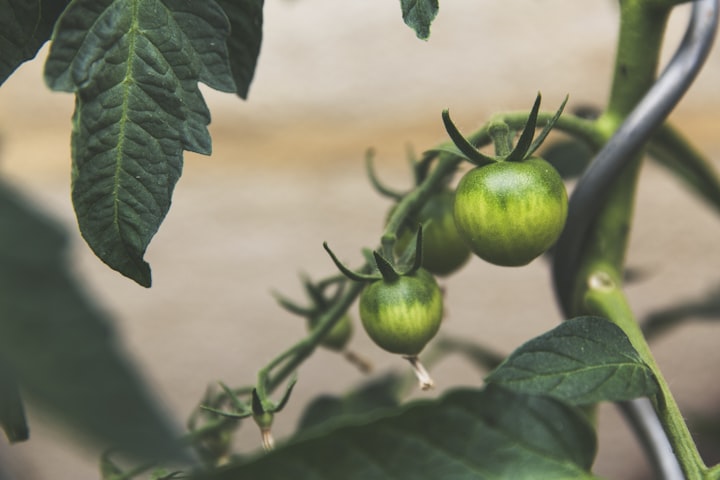
Contents:
• Introduction
• Components of Organic Farming
• Characteristics of Organic Farming
• Need of Organic Farming
• Advantages
• Disadvantages
• initiatives to promote Organic Farming
• Conclusion
Introduction :
• Organic farming is a method of farming system which primarily aimed at cultivating the land and raising crops in a natural way. It aims to keep the soil alive and in good health by use of organic wastes (crop, animal and farm wastes, aquatic wastes) and other biological materials along with beneficial microbes (biofertilizers) to release nutrients to crops for increased sustainable production in an eco-fr
iendly
Components of Organic farming:
• Maintaining genetic diversity
• Managing soil health
• Selection of variety
• Nutrient management
• Water management
• Weed management
• Pest and Disease management
• Livestock management
Characteristics of Organic Farming:
• Protecting the long-term fertility of soils by maintaining organic matter levels, encouraging soil biological activity, and careful mechanical intervention.
• Providing crop nutrients indirectly using relatively insoluble nutrient sources which are made available to the plant by the action of soil microorganisms.
• Nitrogen self-sufficiency through the use of legumes and biological nitrogen fixation, as well as effective recycling of organic materials including crop residues and livestock manures.
• Weed, disease and pest control rely primarily on crop rotations, natural predators, diversity, organic manuring, resistant varieties and limited (preferably minimal) thermal, biological and chemical intervention.
• The extensive management of livestock, paying full regard to their evolutionary adaptations, behavioural needs and animal welfare issues with respect to nutrition, housing, health, breeding and rearing.
• Careful attention to the impact of the farming system on the wider environment and the conservation of wildlife and natural habitats.
Need of Organic Farming:
With the increase in population in India, we need not only to stabilize agricultural production but to increase it further in a sustainable manner.
• The scientists have realized that the ‘Green Revolution’ with high input use has reached a plateau and is now sustained with diminishing return of falling dividends.
• Thus, a natural balance needs to be maintained at all cost for the existence of life and property.
• The agrochemicals which are produced from fossil fuel and are not renewable and are diminishing in availability.
• It may also cost heavily on our foreign exchange in future.
Govt. initiatives to promote Organic Farming:
• Government of India has been promoting organic farming under two dedicated Schemes, namely, Paramparagat Krishi Vikas Yojana (PKVY) and Mission Organic Value Chain Development for North Eastern Region (MOVCDNER) since 2015-16 under National Mission for Sustainable Agriculture (NMSA).
• Organic Farming has also been supported under other Schemes viz Rashtriya Krishi Vikas Yojana (RKVY) and Mission for Integrated Development of Horticulture (MIDH), Network Project on Organic Farming under Indian Council of Agricultural Research (ICAR).
• Third party certification of organic farming is promoted by Agriculture Processed Food and Export Development Authority (APEDA), Ministry of Commerce.
1. Paramparagat Krishi Vikas Yojana:
• The Paramparagat Krishi Vikas Yojana (PKVY) is an extended component of Soil Health Management (SHM) under the Centrally Sponsored Scheme (CSS), National Mission on Sustainable Agriculture (NMSA).
• Launched in 2015, it aims at supporting and promoting organic farming, in turn resulting in improvement of soil health.
Objective:
• Promote organic farming among rural youth/ farmers/ consumers/ traders.
• Disseminate latest technologies in organic farming.
• Utilize the services of experts from public agricultural research system in India.
• Organize a minimum of one cluster demonstration in a village.
Major Features of the Scheme:
• The cluster chosen for Organic Farming shall be 20 ha or 50 acres in extent and in as contiguous a form as possible.
• Of the total number of farmers in a cluster, a minimum of 65 percent farmers should be allocated to small and marginal category, to be fulfilled at cluster level as far as practicable.
• Adoption of Participatory Guarantee System (PGS) certification through cluster approach.
• Adoption of organic village for manure management and biological nitrogen harvesting through cluster approach.
2. Mission Organic Value Chain Development for North Eastern Region:
• Ministry of Agriculture and Farmers Welfare launched a Central Sector Scheme named Mission Organic Value Chain Development for North Eastern Region for implementation in Arunachal Pradesh, Assam, Manipur, Meghalaya, Mizoram, Nagaland, Sikkim and Tripura during 2015-16 to 2017-18.
• The scheme aims at development of certified organic production in a value chain mode to link growers with consumers and to support the development of entire value chain.
• The scheme was approved with an outlay of Rs. 400 crore for three years.
• The assistance is provided for cluster development, on/off farm input production, supply of seeds/planting materials, setting up of functional infrastructure etc.
Advantages of organic farming:
• Farmers can reduce their production costs because they do not need to buy expensive chemicals and healthier farm workers.
• It can support substantially higher levels of wildlife especially in low lands and where animals can roam in pastures or graze on grassland.
• In the long term, organic farms save energy and protect the fewer residues in food.
• Organic farming practices not only benefit dairies as well as when dairies feed their cows organic feed, the cows experience better health.
• More animals and plants can live in the same place in a natural way.
• Pollution of ground water is stopped.
Disadvantages of Organic Farming:
• Organic food is more expensive because farmers do not get as much out of their land as conventional farmers do. Organic products may cost up to 40% more.
• Marketing and distribution is not efficient because organic food is produced in smaller
• Food illnesses may happen more often.
• Organic farming cannot produce enough food that the world’s population needs to survive. This could lead to starvation in countries that produce enough food today.
Conclusion:
• India has 30 percent of the total organic producers in the world, but accounts for just 2.59 percent (1.5 million hectares) of the total organic cultivation area of 57.8 million hectares.
• India needs to bring more area under Organic farming in the future, with better incentives to the cultivators.
• Organic farming has the bright prospect in the future with advantages of soil and biodiversity preservation, environment conservation and healthy citizens.
• India needs the introduction of structural changes through policy interventions and technological deployment in organic farming and make it resilient, sustainable and profitable.





Comments
There are no comments for this story
Be the first to respond and start the conversation.